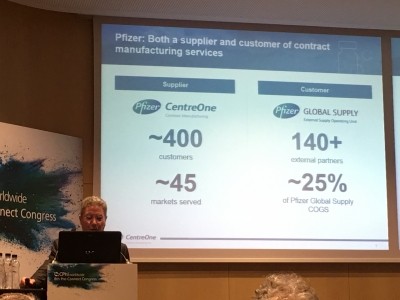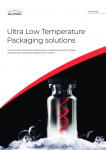One-stop-shop CMOs could fall into pharma's over-capacity curse, say experts

The current vogue among larger contract manufacturing organisation’s (CMO) is to try and win a greater share of customers’ development spending by offering the widest possible range of services.
Patheon, for example, said merging with DSM’s contracting arm would add “new value chain capabilities and technologies,” while newly public contractors Catalent and Recipharm have both spent their stock market money on bolt-on takeovers that add capacity.
“Several of the larger CMOs are looking to extend their service offering to align with the one-stop-shop service provider model,” CEO of UK-based sterile injectables CMO Symbiosis Colin MacKay told Outsourcing-Pharma.com.
“Arguably that is an effort to resurrect the all-under-one-roof organisational model, which the big pharma companies had in-house a generation ago, prior to the advent of modern drug development outsourcing as it we know it now.”
Commenting on AMRI’s recent acquisition spree which included acquiring site from Aptuit last week and the $110m purchase of Oso Biopharmaceuticals last June, MacKay said he believed other large CDMOs would be prompted to make similar deals, though told us “underlying strategic corporate factors may be the true drivers of this consolidation activity rather than customers crying out for it.”
Over-capacity risk?
Aiswariya Chidambaram, a Senior Research Analyst at Frost & Sullivan, had a more positive view towards consolidation in the industry and the growing trend of end-to-end service providers.
“CMOs follow a totally different business model structure than pharma companies,” she told this publication. “Entrenching an end-to-end business model offers a wide range of value-added services, pharmaceutical companies have a better value proposition to outsource and maintain their growth as well.”
This CMO model is further encouraged by the emergence of "virtual pharma" companies that have little in-house manufacturing capacity (Valeant being one of the larger examples), increased adoption of risk-sharing models and a trend for end users to consolidate their suppliers, she argued.
“However, it is cautious that CMOs carefully outweigh risks and benefits and expand into right product segments, lest they be hit by over capacity,” she warned. “Anticipating capacity demand has always remained a tricky speculation and generally as analysts these are the trends we foresee for the various product segments.”
Injectables boom, but not just for CMOs
For firms with end-to-end service ambitions, Aesica recently warned of the complexity of entering the “lucrative” aseptic sector, with the CDMO itself having turned its back on injectables following a regulatory audit. (Though for evidence of the difficulties of ensuiring sterility in making injectables, the regulatory saga at the now defunct CMO Ben Venue Laboratories is the go-to example).
Despite this, as shown by AMRI, outsourcing firms continue to enter the sterile injectables sector though Christian Carlson, an Associate at healthcare investment bank 11T Partners, argues this is more of a race to acquire the best assets rather than a consolidation or drive to resurrect the all-under-one-roof model.
“The supply of good aeseptic manufacturing assets is constrained and demand is only expected to grow with injectables becoming an increasing share of pipelines and recent clarity into the biosimilar pathway in the US also contributing,” he told Outsourcing-Pharma.com.
“From my experience, not only CMOs are looking in the space but many small- mid-cap pharma are also looking to acquire, particularly those with operations expertise and a generic focus.”














